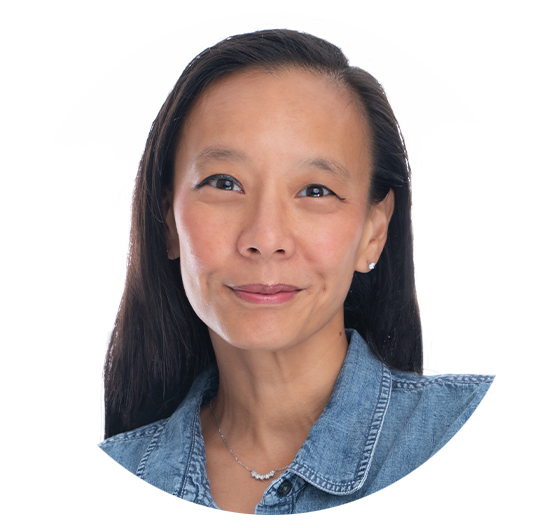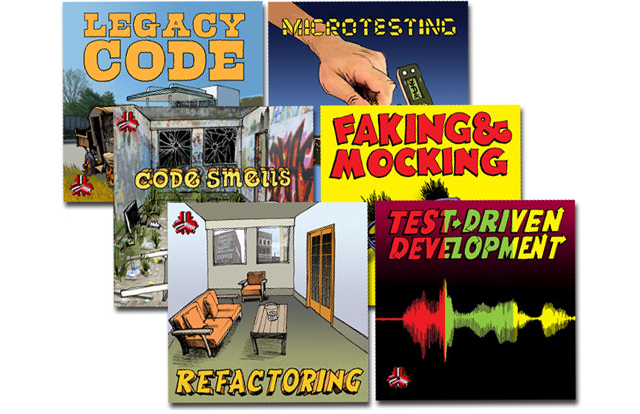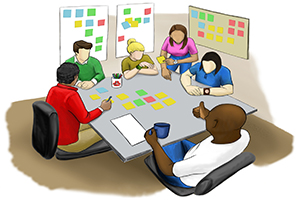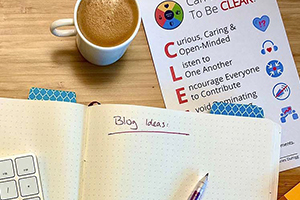Note: This post is co-authored with Deneisha Franklin.
Hint: Inclusivity isn’t skin-deep.
At first glance, we are getting better at creating more inclusive work environments. Research in 14 countries shows that 96-98% of large companies (above 1,000 employees) have Diversity Programs (Boston Consulting Group, February 2019), and many organizations have begun to proudly visualize people of colour and gender in their imagery. But maybe image isn’t enough. Yes, 38 of the Fortune 500 have women leaders in 2020 (three are women of colour, but none Black or Latina). Yes, 34% of the Fortune 500’s board seats were held by women and minorities in 2018 (up just 3.2% from 2016). Organizations are at least trying to change. But how can we be sure these changes are having the effects we want: inclusion, equity, justice? And that these changes are as impactful as they can be? How do we assess meaningful change and go beyond imagery to real inclusion? Representation is a good first step toward “diversity and inclusion.” But how do we know if we’re being really inclusive?
The bare “inclusion” aspect of “D&I” is easier to see. But being truly inclusive means going further than skin deep. Even though companies are working to become more inclusive than ever, with employee resource groups sprouting up, organizations changing their logos during Pride, and inclusion training in full force–some companies even publicly sharing their annual D&I reports for accountability–there are still some misconceptions in Diversity & Inclusion work. Simply inviting underrepresented groups to the table is not enough.
INCLUSIVITY ISN’T A “NORM” OF ACCEPTANCE.
How many diversity pictures do you see of a targeted swatch of skin colour and gender, but everyone in this ‘diverse’ group is wearing the same colour and style of clothing? Workplace uniforms create uniformity, create the sense that everyone is the same on the outside and so they are also the same on the inside. Common metaphors for this surface-level acceptance are “bananas” for Asian people and “oreos” for Black people - that is, colour on the outside (i.e. skin) and white on the inside (i.e. behavior). They are accepted as long as they behave familiarly to their peers, or comply with the “norm.” The characteristics that make us diverse from one another are hidden by uniform uniformity, thereby perpetuating surface-level conformity as the desired form of “inclusion.”
One solution for “representation” has been a policy for racial and gender quotas (i.e. affirmative action). Policies like this give underrepresented groups a seat at the table from a numbers perspective, but the problem is that those with the seat at the table often have to ‘lean in,’ or assimilate to the existing table setting.
Consider this scenario: On a normal day in the office, your team is assigned to a new project and a few members of the team get together to discuss ideas, only – they didn’t invite you to the meeting. You let them know that you have a ton of great ideas for the project and would really like to be included in future discussions, so they forward you the invite for the next one. You get to the meeting and are super excited to share your ideas with the rest of the group, but when you get there, you quickly realize that no one agrees with your ideas because they are way too different than what they’re used to doing for similar projects, and people just keep talking over you.
Did your teammates make a change to include you in the meeting? Sure. But once you got to the meeting, did you feel like you were included in the discussion? Probably not. Furthermore, did your teammates feel like your contributions added valuable perspective to the project? It doesn’t seem like it. Although you’re physically sitting at the table, your physical inclusion doesn’t matter when acceptance is conditional and given only when you fit the “norm.” Trying to fit the norm can be toxic, making you the canary in a coal mine: Heddleson references “the canary” testing the toxicity of inclusion climate through its ability to survive. In this model, the “representative of diversity” carries the burden of “inclusion” and “acceptance.”
Is your inclusion policy exclusive to those who can dress the part? Further, is your inclusion inclusive to those who don’t look and dress like you?
INCLUSIVITY ISN’T ABOUT PEOPLE, IT’S ABOUT INDIVIDUALS.
Inclusion is not about representation–not about representing your entire underrepresented group. Often our “canaries” are not only tasked with “leaning in” but also with representing all diverse opinions. How often is an individual who fits the norms asked to represent everyone else presumably like them? Wouldn’t it be absurd to ask, “Tell me, what do all people who look like you think?” The burden to represent is okay taken as a choice but not okay as an obligation.
There are examples within racial differences where representation raises cultural concerns. For Asians: “the tallest blade of grass gets cut” or “the tallest nail gets hit the hardest,” meaning that those who stand out and break the norm will be punished. Further, even if an Asian person cannot entirely blend into a dominant culture, they can be “idealized” within the existing social norms (i.e. as a model minority). In Black families, children are often taught at a young age that compliance is best, especially in environments where they are underrepresented–they are told they shouldn’t rock the boat and should be grateful for a spot at the table at all. Think about these metaphors in contrast to the American metaphor of speaking out and gaining attention: “the squeaky wheel gets the grease.” Throughout history and globally, underrepresented groups have been suppressed by these systemic, social constructs that prevent them from progressing within the existing structure. This ecosystem of suppression is multigenerational and results in limited role models for underrepresented individuals. We need inclusivity on an everyday level, focusing on individuals rather than group representation and undoing the damage of the “norm.” Inclusivity is human-centered and individually focused.
Is your work inclusion policy about percentages or about individual people? Can you/I/we become aware of how group norms change the way we approach individuals?
INCLUSIVITY ISN’T “TOLERANCE.”
If we truly acknowledge that inclusion isn’t just about skin colour and surface-level statistics, then we can recognize that it is about being inclusive to other individuals. You see, this is the problem with “inclusion.” While most people consider inclusion to be the act of including someone, we rarely consider what people experience after we create these ‘inclusive’ spaces. Once we invite someone to the table, do they really feel like they belong there? This is why you see so many organizations starting to include the word ‘belonging’ in their diversity and inclusion titles and communications. The two are not synonymous, and we must recognize that tolerance does not equal inclusivity. It can actually have the opposite effect. The act of including someone does not innately imply that you are also involving them. Therefore, when you make the conscious decision to include someone, you need to dig a little deeper to embrace their perspectives, regardless of whether or not they align with your own.
If we want to pursue real inclusivity, we can check our biases: are you referencing (whether actively or passively) norms of acceptance for different groups of people? Because this requires intentional inner reflection, these biases can be the hardest thing to admit, and simultaneously the easiest to act upon. It’s inevitable that you are going to make mistakes, and it can be hard to swallow when you realize that you’ve unintentionally been using these norms–which are really microaggressions–at work. And when you do reach this point, it is your responsibility to equip others with the same knowledge. Recognize that though you have this responsibility, that does not necessarily imply that it is your fault. What is your fault, though, is if you disregard the exclusive nature of your inclusion, especially if you are a people manager or the leader of a team. This knowledge is our tool for improving the world, transforming surface-level “inclusion” into real inclusivity. Take what you’ve learned and make it a goal to share it with anyone that you can, especially those who value your thoughts and opinions. Everyone has a platform to use for good.
Once you’ve shared the knowledge with those around you, continue your journey by modeling the behavior yourself. To truly empower others, you’ve got to actively foster an environment that is conducive to this type of learning. Once we are all equipped and empowered, we can and must hold each other accountable. These sound like big tasks, but if everyone works on small changes, together those can create large social change. You are part of that social change. Below we offer a few small changes you can make to pursue real inclusivity.
Personally, do you find yourself ignoring your own privilege because you know a diverse person or have a diverse friend? Can you acknowledge that if you are reading this we have some sort of privilege? Can you move past feeling guilt and shame, instead focusing on responsibility?
Inclusion is internal and What you can do.
At work:
- In presentations and other forms of media, visualize diversity in power positions (reversal of the norms).
- With written communication, leverage diverse pronouns.
- When interacting, make space for others: invite, encourage, and positively reinforce sharing of others’ thoughts and opinions.
- Lift and promote others, acknowledge publicly and reference positive contributions. (Listen to ‘Tiny Habits Are The Key to Behavioral Change’)
- Create psychological safety. (Read Google’s Project Aristotle as a case study)
- Don’t displace others’ ideas. Learn to build on ideas together. (Leverage the improv technique ‘Yes, And’)
- Learn convergent thinking techniques to coalesce versus compete.
- Don’t just invite someone to the party or ask them to dance: include them in planning the party.
For self:
- Check your biases! Jane Elliott’s Learning Materials
- Get involved in creating safe spaces in your community.
- Listen (don’t take over).
- Educate yourself and others.
- Pause and reflect on: Tolerating other ideas v. Curiosity about other ideas (Read ‘Why Curiosity Matters’)
- Check your ego and examine your experiences with judging yourself or others.
References:
Clorox’s New CEO will Increase the Number of Fortune 500 Women to 38 (CNBC, Aug 3, 2020)
Women CEOs Who are Women Hits Record High (Fortune, May 18, 2020)
Only 1 Fortune 500 Company is Headed by a Woman of Color (Axios, Jan. 14, 2019)
The Missing Pieces Report (Harvard Law and Deloitte, Feb. 5, 2019)
Kate Heddleston ‘How Our Engineering Environments are Killing Diversity’
Women and Minorities on Fortune 500 Boards: Room to Grow (Wall Street Journal March 12, 2019)
Diversity & Inclusion Versus Justice & Equity (Stewart, University of Colorado, November 30, 2017)
George Couros ‘The Difference Between “Change” and “Meaningful Change’




